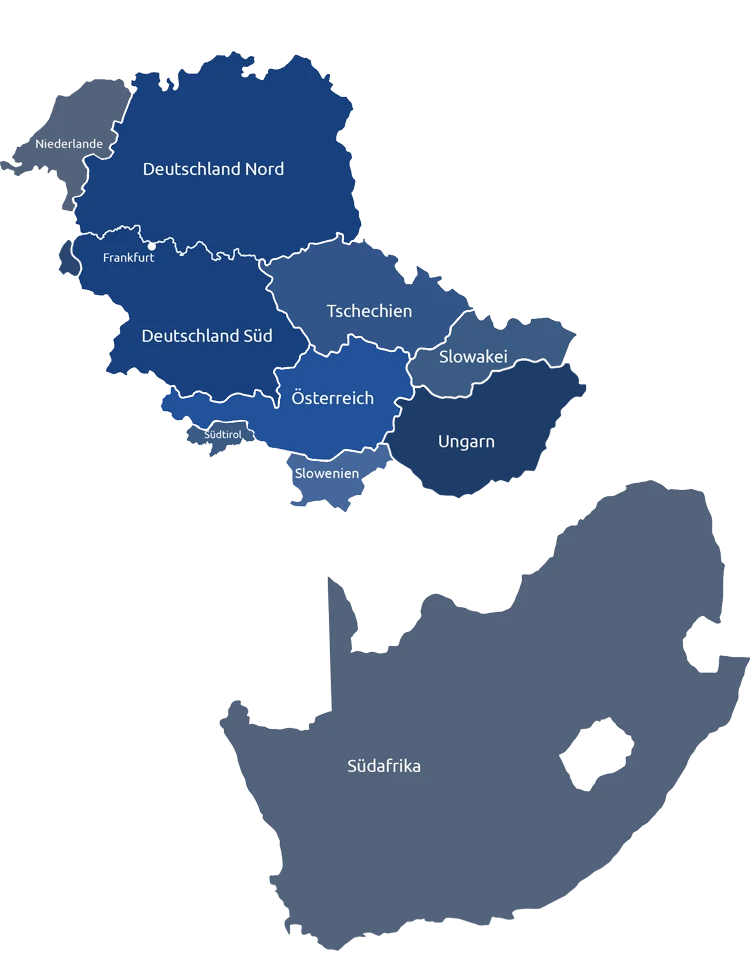HACCP: The foundation of food safety in modern production
Food safety is at the heart of all responsible food production. The HACCP concept (Hazard Analysis and Critical Control Points) forms the indispensable foundation for safe food processes. For almost two decades, HACCP has not only been a tried and tested method, but also a legal obligation for all food business operators in the European Union.
What is HACCP and why is it so important?
HACCP stands for “Hazard Analysis and Critical Control Points” and describes a systematic concept for identifying, assessing and controlling hazards in food production. This preventative system was originally developed by NASA in the 1960s to ensure the safety of astronaut food. Today, it is the most important quality management system for food safety worldwide.
The HACCP concept takes a proactive approach: instead of inspecting finished products, potential hazards are identified and prevented during the production process. This methodology makes HACCP an indispensable tool for ensuring food safety from the raw material to the end consumer.
Legal basis: HACCP obligation in
Since January 1, 2006, the implementation of an HACCP concept has been mandatory for all food business operators in the European Union. The legal basis for this is EU Regulation (EC) No. 852/2004 on the hygiene of foodstuffs. This regulation applies across all sectors for all stages of the food chain, from primary production to retail.
Those affected include butchers, bakeries, restaurants, food manufacturers of all sizes, food service providers and food retailers. Failure to comply with HACCP regulations can lead to significant legal consequences, including fines and business closures.
The 7 HACCP principles: Step by step to food safety
The HACCP concept is based on seven scientifically sound principles that must be applied systematically. This proven methodology ensures comprehensive analysis and control of all relevant hazards.
Step 1:
Carry out a risk analysis
The first principle of the HACCP concept requires a comprehensive identification and assessment of all potential hazards in the production process. A distinction is made between three main categories of hazards:
Biological hazards often pose the greatest risk and include pathogenic bacteria such as salmonella, listeria or E. coli, viruses, parasites, molds and yeasts as well as storage pests. These microorganisms can cause serious food poisoning or other health problems.
Chemical hazards arise from contamination with heavy metals, pesticide or pharmaceutical residues, cleaning agents, lubricants, allergens or incorrect doses of additives. Naturally occurring toxins such as mycotoxins or plant toxins also fall into this category.
Physical hazards include all foreign bodies that can cause injury or impair food quality, such as broken glass, metal parts, plastic fragments, stones or other hard objects.
Step 2:
Determine critical control points (CCPs)
After hazard identification, the critical control points (CCPs) are determined. A CCP is a procedural step at which a control can and must be applied in order to prevent, eliminate or reduce a hazard to an acceptable level. The determination is often made using a decision tree that systematically leads through yes/no questions.
Step 3:
Set critical limit values
For each identified CCP, measurable critical limits must be defined that distinguish between safe and unsafe conditions. These limits are based on scientific findings and regulatory requirements.
Step 4:
Establish a monitoring system
A continuous monitoring system ensures that the critical limits at each CCP are adhered to. Monitoring must take place quickly enough to enable corrective measures to be initiated in good time.
Step 5:
Define corrective measures
Corrective measures must be defined in advance for each CCP and initiated immediately if monitoring shows that a critical limit value has been exceeded. These measures must regulate both the immediate control of the deviation and the handling of potentially affected products.
Step 6:
Perform verification
Regular verification confirms that the HACCP concept is working effectively. This includes validation of CCPs and limits, calibration of monitoring equipment, review of records and regular audits of the entire system.
Step 7:
Keeping documentation and records
Complete documentation of all HACCP activities is essential for traceability and regulatory compliance. This includes records of monitoring, corrective actions, verification activities and all relevant data on critical control points.
Modern challenges and developments in the HACCP concept
Since its introduction, the HACCP concept has continuously evolved to meet new challenges in the food industry. Digitalization and Industry 4.0 have created innovative possibilities for monitoring and documentation. Intelligent sensors, the Internet of Things (IoT) and cloud-based data management systems enable more precise and efficient monitoring of critical control points. At the same time, new challenges are emerging, such as global supply chains or emerging pathogens.
Integration of HACCP into existing quality management systems
Modern HACCP concepts are increasingly being integrated into comprehensive quality management systems. Standards such as ISO 22000 (food safety management systems) combine HACCP principles with other principles. This integration enables a more holistic approach to food safety and quality.
The combination of HACCP with other standards such as BRC (British Retail Consortium), IFS (International Featured Standards), or SQF (Safe Quality Food) is becoming a necessity for many companies in order to meet the requirements of large retail chains and international markets.
Hygiene solutions for effective HACCP implementation
The successful implementation of a HACCP concept requires not only theoretical knowledge but also the right technical equipment. Modern hygiene solutions play a crucial role in controlling critical control points and maintaining hygienic conditions.
Personnel hygiene systems such as automatic handwashing stations, disinfectant dispensers, and access controls ensure that employees do not pose a source of contamination. Operational hygiene solutions include cleaning systems, CIP (Cleaning in Place) systems, and environmental monitoring technologies.
The PHT Group, as a specialist in hygiene solutions, offers comprehensive systems specifically designed for the requirements of the food industry. From sensor-controlled hygiene stations to automated cleaning systems, these technologies support the effective implementation of HACCP requirements.
HACCP training and staff development
A successful HACCP system stands and falls with the competence of the involved employees. Regular training is not only a requirement of EU regulation but also a critical success factor for food safety. All employees must understand the basic principles of the HACCP system and know their role in maintaining food safety.
Modern training concepts utilize e-learning platforms, practical exercises, and regular refresher courses to ensure that HACCP awareness is embedded throughout the company.

A comprehensive hygiene concept is essential for a HACCP concept. The hygiene requirements are so complex that it is advisable to involve specialists. This ensures that butcher shops, bakeries, and other food producers comply with the EU regulation. As a renowned partner in the food industry, we are happy to advise you on your hygiene concept according to HACCP standards and offer corresponding hygiene solutions.



